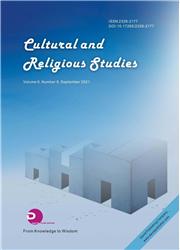The Rise of Women’s Education and the Modernity of East Asia: Focusing on the Education of “Virtuous Wives and Worthy Mothers” in China and Japan
引用次数: 0
Abstract
This year marks the 50th anniversary of the normalization of diplomatic relations between China and Japan. Looking back on the past and forward to the future, we realize modernity has become a critical issue that not only China and Japan, but the whole East Asian region should pay attention to. China and Japan are both within the “Circle of Confucius Culture” and are both modern latecomer countries. As they were coerced by western countries to enter the modern age, they shared multiple common features. An exploration of the two countries’ respective rising of modern women’s education is an important path to discuss the reconstruction of gender and an important method of the course of the embodiment of east-Asian women into modernization drives. With regards to conclusion, entering the modern age, Chinese and Japanese intellectuals reshaped the female gender in terms of interpersonal relationship, value system, and knowledge structure by advocating the idea of “virtuous wives and worthy mothers” education. In the concept of virtuous wives and worthy mothers in East Asia, the Confucian ethics of “docility and virtue” is the soul, and modern scientific knowledge serves this core value. On the other hand, in the course of localization in China and Japan, this imported concept from the West has encountered a completely different historical fate. from the angle of history of systems: discussion of the initiation, development, and transitions of the systems of modern education for women, (2) from the angle of history of thoughts: analyzing the connotations and features embodied in education for women at different times, mainly focusing on thoughts of modern educators on education for women and their practices, (3) from the angle of case studies, examining the institutions, curriculum design, students’ family background, and conditions of studies of modern women. In a word, previous studies focused on individual countries, with confined focus on for women itself.妇女教育的兴起与东亚的现代性——以中日“贤妻良母”教育为中心
今年是中日邦交正常化50周年。回顾过去,展望未来,我们意识到现代性已经成为不仅中日两国,而且整个东亚地区都应该关注的关键问题,中日同属“孔子文化圈”,都是现代后发国家。在西方国家的胁迫下,他们进入了现代社会,具有许多共同的特点。探讨两国各自崛起的现代女性教育,是探讨性别重构的重要路径,也是东亚女性融入现代化进程的重要方法。综上所述,进入近代以来,中日知识分子倡导“贤妻良母”教育,在人际关系、价值体系、知识结构等方面对女性进行了重塑。在东亚贤妻良母的观念中,儒家“唯命是从”的伦理道德是灵魂,现代科学知识服务于这一核心价值。另一方面,在中日本土化的过程中,这种从西方引进的概念遭遇了完全不同的历史命运。从制度史的角度:探讨现代妇女教育制度的产生、发展和变迁,(3)从个案研究的角度,考察现代女性的学习机构、课程设置、学生的家庭背景和学习条件。总之,以前的研究侧重于个别国家,而仅限于妇女本身。
本文章由计算机程序翻译,如有差异,请以英文原文为准。
求助全文
约1分钟内获得全文
求助全文

 求助内容:
求助内容: 应助结果提醒方式:
应助结果提醒方式:


